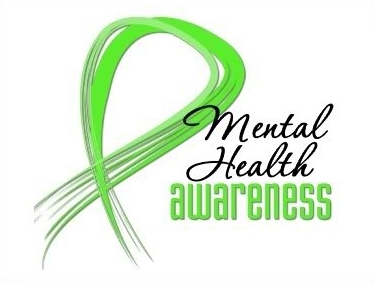Does Myofascial Release Promote Mental Health?

By Kellen Dorsh, yogi and BJJ practitioner
Most athletes understand how regular myofascial release improves performance across the board.
Search Google for benefits of foam rolling and you'll find over 9 million results.
Narrow that down to just PubMed—the National Institutes of Health research database—and you'll find over 9,000 medical studies published on the topic of fascia release.
And yet, few athletes consider how the use of mobility tools affects mental and emotional health.
THE MIND-BODY CONNECTION
Mental and physical health are intimately intertwined.
I know this because I am a yoga instructor. I witness the mind-body connection every day, both within myself and my students.
But you don’t have to Downward Dog to understand the Mind-Body connection.
Anyone who has ever woken up with a sore back or kinked neck can attest to the fact that stiffness feels bad, both physically and mentally.
As you negotiate your way out of bed, your movements are limited by your threshold for pain.
Work, workouts, and personal goals take a backseat to the long and tedious process of healing—a process that can leave you feeling derailed and frustrated, or worse.
MENTAL HEALTH MAY: MY QUEST FOR FREEDOM FROM PAIN
On May 20th, 2014, I lost my best friend to a heroin overdose. Unfortunately, this is a common story. Opioids killed more people than car crashes in 2014, and that number is likely to keep increasing.
So when I saw that May has become a month for mental health awareness, I felt inspired to dedicate 30 consecutive days to finding the optimal ways to manage my thoughts and emotions.

Inspired by fitness guru Ben Greenfield, I first turned to essential oils. I travel with essential oils, and it definitely helps.
Lavender has become my new bedtime buddy, and peppermint is my new favorite pre-workout supplement.
And before you laugh, consider that inhaling peppermint essential oil has been shown to increase strength by up to 30% (source).
But I also love deadlifts, Muay Thai, and Jiu-Jitsu. Needless to say, essential oils only do so much.
On Day 4 of My Mental Health Month, I decided to stop, drop, and foam roll in my office.
Usually, I foam roll to relax my muscles after a workout. But a funny thing happened when I foam rolled that afternoon: I began wondering how regular rolling would affect my mood.
Yes—fascia release feels great. But does it provide lasting mental and emotional benefits?
FASCIA RELEASE AND DEPRESSION
To find the answer, I turned to PubMed.
There are a variety of studies that indicate fascia release— both massage and self-administered rolling/trigger point release—does, indeed, improve mental health.
In one study, researchers examined a 39-year-old woman who suffered from depression.
Her symptoms subsided after just 4 weeks of myofascial release treatment, leading researchers to say that myofascial release is an important adjunctive strategy to consider while treating patients with depression (source).
In a much larger study, researchers at the University of Granada, Spain, performed a randomized controlled clinical trial to gauge the effectiveness of myofascial release on patients who suffered from fibromyalgia.
Seventy-four participants were split into 2 groups: One group received myofascial release therapy, while the other group received a "sham" treatment.
After 20 weeks, those who received myofascial therapy showed decreased anxiety, pain, and better quality of sleep.
As a result, researchers concluded that myofascial release techniques can not only help to manage pain, but also improve overall quality of life (source).
TIPS FOR ROLLING YOUR (MENTAL) PAIN AWAY
Begin with what hurts. Myofascial release can speed recovery by flooding the area with water and healing proteins.
*Consult a physical therapist to learn more about specific myofascial release techniques that can help.
Develop a holistic routine. Of course, proactive self-care is always best. Download the Mobilitas 15-Minute Tune Up for a quick and effective routine designed to improve mobility and reduce pain.

Box breathe after you roll. Get the most out of your Tune Up by practicing the Box Breathing technique after you roll.
Here’s how it works:
- Inhale for 5 seconds, hold (lungs full) for 5 seconds
- exhale for 5 seconds and hold (lungs empty) for 5 seconds
- Repeat this breathing cycle for about 1-5 minutes. This technique has been shown to soothe the nervous system, and it’s often prescribed as an antidote for severe anxiety.
Take your routine on the road. Consistency is key.
Never let business trips or vacations disrupt your self-care plan. Challenge yourself to get plenty of exercise while you travel, and prioritize your mobility routine to make sure you unwind your body from time spent traveling.
My two favorite mobility tools for travel are the mobility peanut and the mobility sphere. They travel easy, and I’ve yet to feel a pain they cannot fix.

Leave a comment